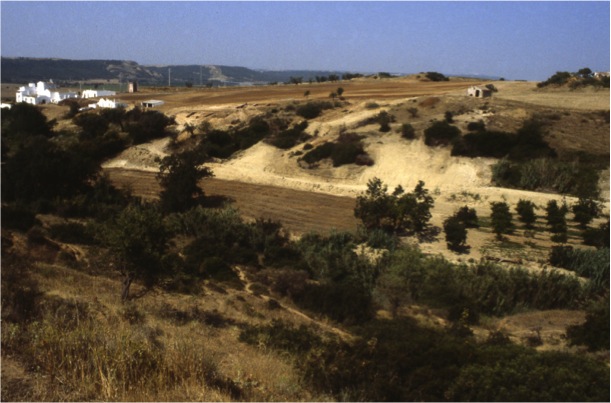The Chora of Metaponto 6: A Greek Settlement at Sant’Angelo Vecchio is the sixth title in the Institute of Classical Archaeology’s series on the rural countryside (chora) of Metaponto. Located on a slope overlooking the Basento River, the site has borne witness to the various lives and transformations of a central part of the Metapontino from prehistory through the current day. Its evidence recounts and illustrates the extraordinary variety of settlements and uses of the territory commonly encountered throughout the landscape’s history.
The excavations, held between 1979 and 1981, brought to light a Late Archaic farmhouse, evidence for the presence of a sanctuary near a spring, and a cluster of eight burials of the mid-5th century BC, but the most impressive remains belong to a production area with kilns. Active in the Hellenistic, Late Republican, and Early Roman periods, these kilns illuminate important and lesser-known features of production in the chora of a Greek city, and also allow us to trace the occupation of the territory in the Late Republican and Early Imperial periods.
The thorough, diachronic presentation of the evidence is complemented by specialist studies on the environment, the landscape, and the artifacts (including ceramics, architectural terracottas, kiln and workshop furniture, tiles, and metals), which range in date from Prehistory to the Post-Medieval period. Significantly, the majority of the evidence from Sant’Angelo Vecchio spans the range of Greek site types (farmhouse, necropolis, sanctuary, and production center) as well as the Greek dates (from the Archaic to Early Imperial periods) highlighted during ICA’s survey of the Metapontine chora. In this regard, the study enhances the four volumes of The Chora of Metaponto 3: Archaeological Field Survey—Bradano to Basento (University of Texas Press, 2011) and provides further insight on the ways in which sites in the chora interacted throughout its history.
